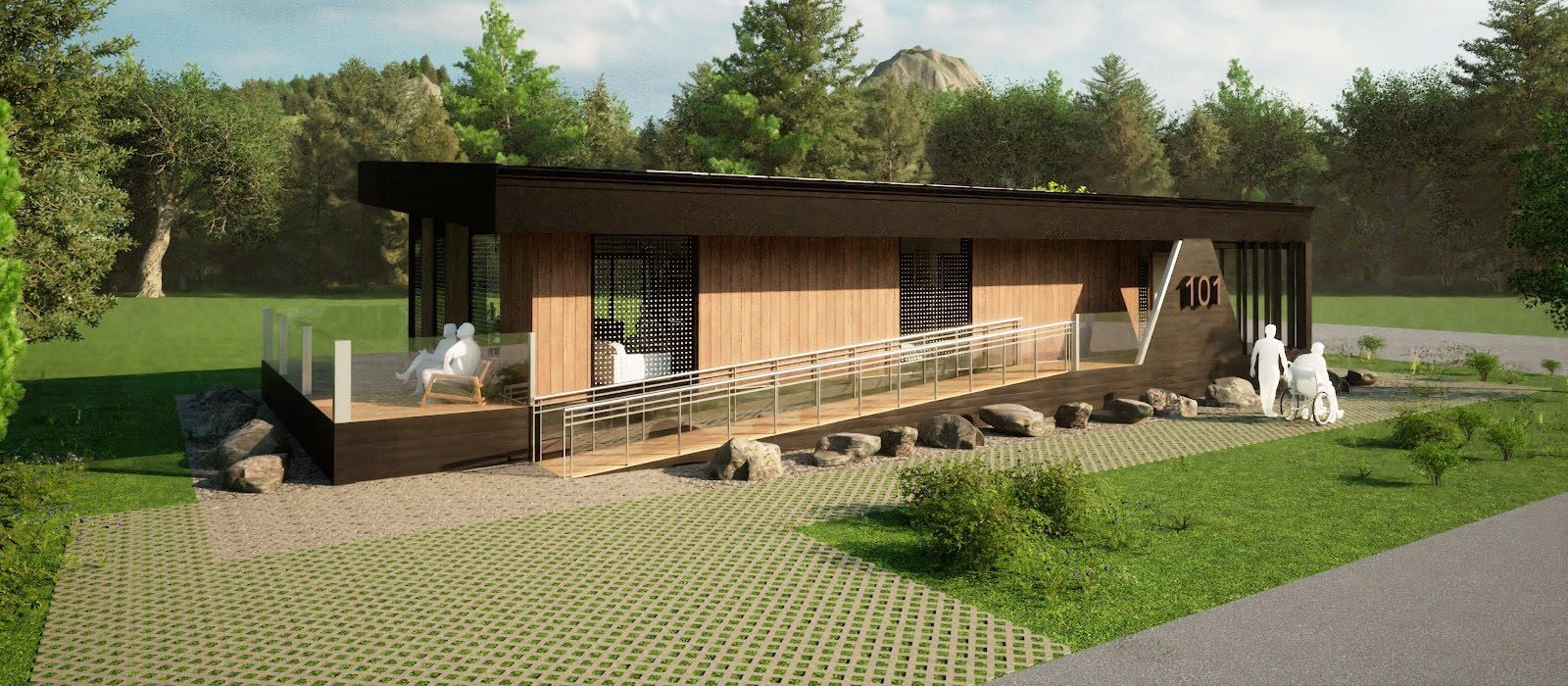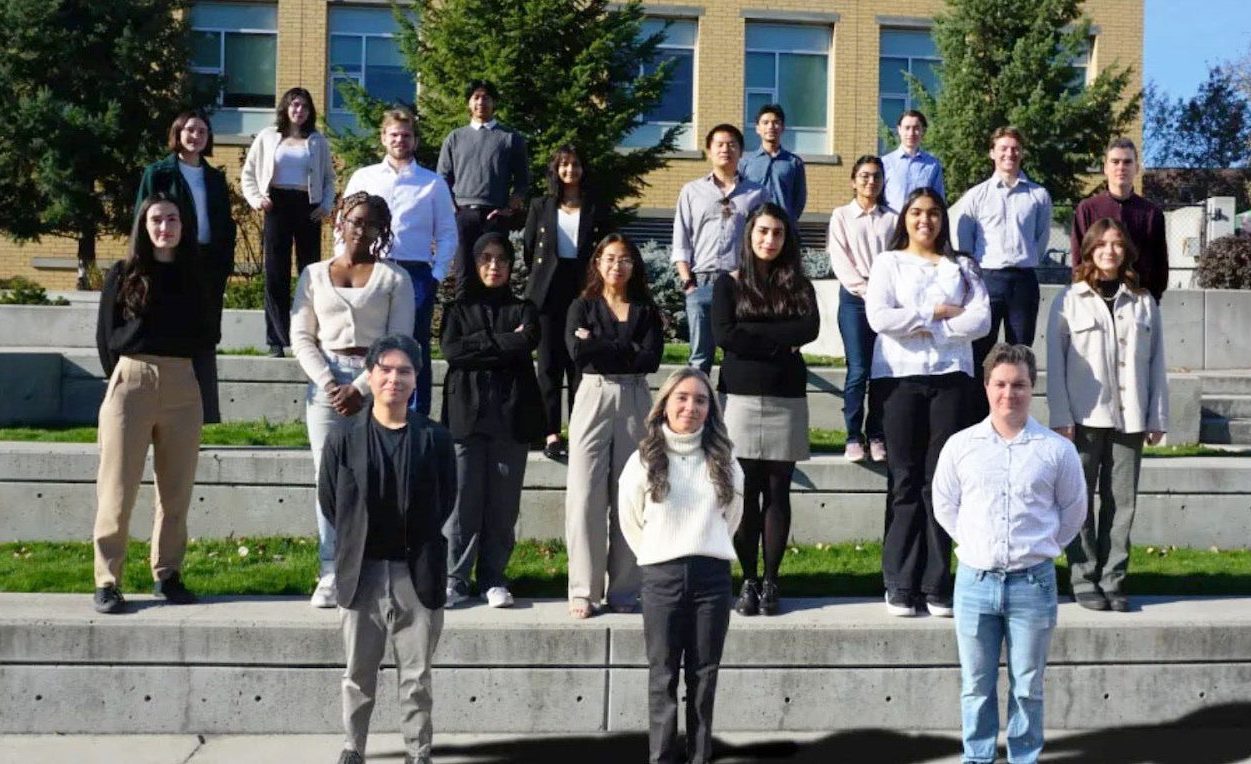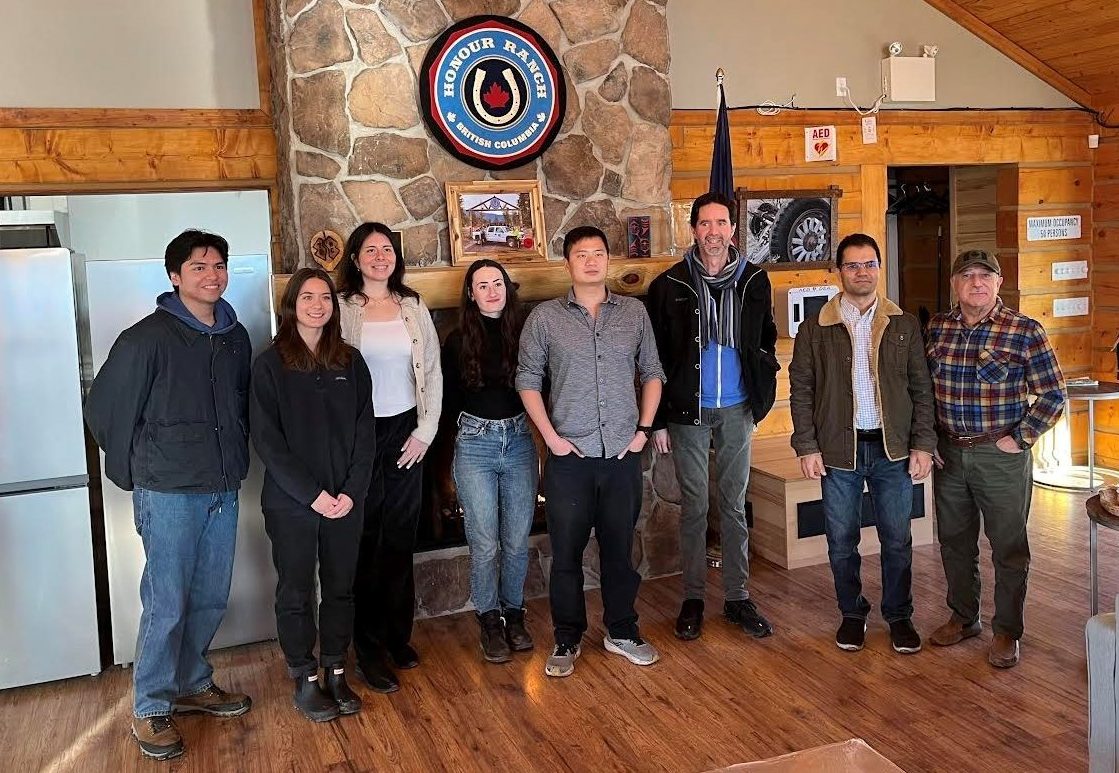
TRU-UBCO team up for success with EcoHaven – TRU Newsroom
An interdisciplinary approach paired with passion is behind an international win for students from Thompson Rivers University (TRU) and University of British Columbia Okanagan (UBCO).
The U.S. Energy Department Solar Decathlon Design Challenge tasks students with creating climate-conscious, low-carbon and high-performance buildings that improve quality of life through greater affordability, resilience and energy efficiency.
The second-place-winning design—EcoHaven—is a 120-square-metre modular home for a single family. It has two bedrooms and two bathrooms. More than a winner, it’s a precedent-setter in areas of sustainability, disaster-resilience and affordability.
International recognition
From left to right: TRU faculty advisor Dale Parkes and students Corbin Guenther, Carlos Tajan, Destynee Sloat, Samantha Krieg (with trophy), Arie Fawwaz and Quinn Soon
The international competition included teams from 37 universities around the world. The TRU-UBCO team placed just after the Georgia Institute of Technology based in Atlanta, Georgia.
“It felt amazing to represent TRU at an international level and be recognized among the top architecture schools around the globe,” says TRU student and architectural team lead Carlos Tajan.
“This experience gave us the chance to connect with fellow students from other countries and share with them the climate issues we are facing in our own regions and our solutions to those problems as the designers of the future,” he says.
The Innovate, Design, Sustain team was made up of about 30 students from TRU and UBCO. The TRU team included three students from the Architectural Engineering Technology diploma program, Corbin Guenther, serving as accessibility director, Nolan Goller, as building envelope director and Sierra Klassen-Johnson as design director. It also included two students from the Bachelor of General Studies program, Tajan and Cole Howeniac, architecture team member.
Interdisciplinary collaboration
While other teams competed with architecture or engineering students, the TRU-UBCO team had both. This created a competitive advantage.
“I think the biggest factor in our success has been our interdisciplinary team,” says Dale Parks, team faculty advisor, co-chair and associate teaching professor in TRU’s Architectural and Engineering Technology department (ARET), who was joined by Hossein Banitabaei, ARET assistant teaching professor.
“Because we had both, the students were able to design a building that was excellent in terms of both the architecture and the engineering,”
The solar decathlon also encourages students to take a holistic approach to building design.
“Our team really did this, looking at every aspect of the design from accessibility to energy, water and material efficiency,” says Parkes.
As a result, EcoHaven has a much lower carbon footprint to construct than a typical house and will produce more energy than it uses on an annual basis.
Building resilience

The multidisciplinary team of TRU-UBCO engineering and architecture students
Responding to recent wildfire seasons, evolving climate concerns and the BC housing crisis, EcoHaven was designed with the goal of building resilience in communities.
“We aimed for EcoHaven to be completely fire-resistant, fully accessible and affordable, which required extensive research and communication to develop a creative solution for our structure,” he says. EcoHaven is fully fire-resistant for up to two hours.
“It is disaster-resistant because it is clad with new non-combustible materials and wrapped in a highly fire-resistant blanket of insulation,” says Parkes. It is also equipped with fire-resistant, roll-down shutters to protect the windows and fire-resistant vents.
Purposeful partnerships
Over the summer months, EcoHaven will come to life, being constructed by TRU trades students on the Kamloops campus and shipped to its permanent location at Honour Ranch, a non-profit facility near Ashcroft.
“Honour Ranch is a great organization that helps first-responders and military personnel recover from work-related injuries,” says Parkes. The work-related injuries include anxiety, depression and post traumatic stress disorder. The ultimate goal is to empower members of the Canadian Armed Forces, veterans and emergency service personnel so they are better equipped to navigate emotional and physical stress. Support for family members is also available.
EcoHaven will house a live-in caretaker.
Looking ahead, EcoHaven serves as a case study for what could be an additional 10 homes on the ranch. This will increase local capacity to offer mental-health programs. Construction of EcoHaven is estimated to take four months and cost just over $300,000. The design partner is the Honour House Society, joined by industry partners are RJC Engineers, Project Green Architecture, Smith + Anderson, Whole Systems Energy, Chandos Construction and Green Construction Research and Training Center.
Lessons learned

Featuring TRU students, faculty advisors and Honour Ranch president Allan De Genova (far right)
The biggest takeaway from the competition for Tajan was the importance of being open-minded and ensuring regular communication among the team.
“This was essential in our design team, where architecture and engineering students had to co-ordinate closely to come up with creative solutions,” he says.
Parkes says he learned that many features that make a building more fire-resistant also make it more sustainable. “Also, many of these fire-resistant features can be easily added to an existing house. For example, the fire-resistant mineral fibre insulation can be added to the exterior of almost any house.
The experience will serve students well in their future endeavours. Parkes found out from organizers that many alumni of the solar decathlon go on to do big things in the construction industry, or even go to work for the National Renewable Energy Laboratory — the organization that hosts the competition.
Parkes says one student has already been accepted into graduate school, and he expects more will follow suit.
Tajan is graduating from TRU and embarking on the next steps in his journey.
“I will be working for a design firm to gain field experience before heading to grad school for my Master of Architecture, as I pursue my dream of becoming a licensed architect,” he says.
“The technical experience I gained from the 2024 Design Challenge will allow me to have more creative freedom in my future projects, whether professionally or in architecture school,” Tajan says.
